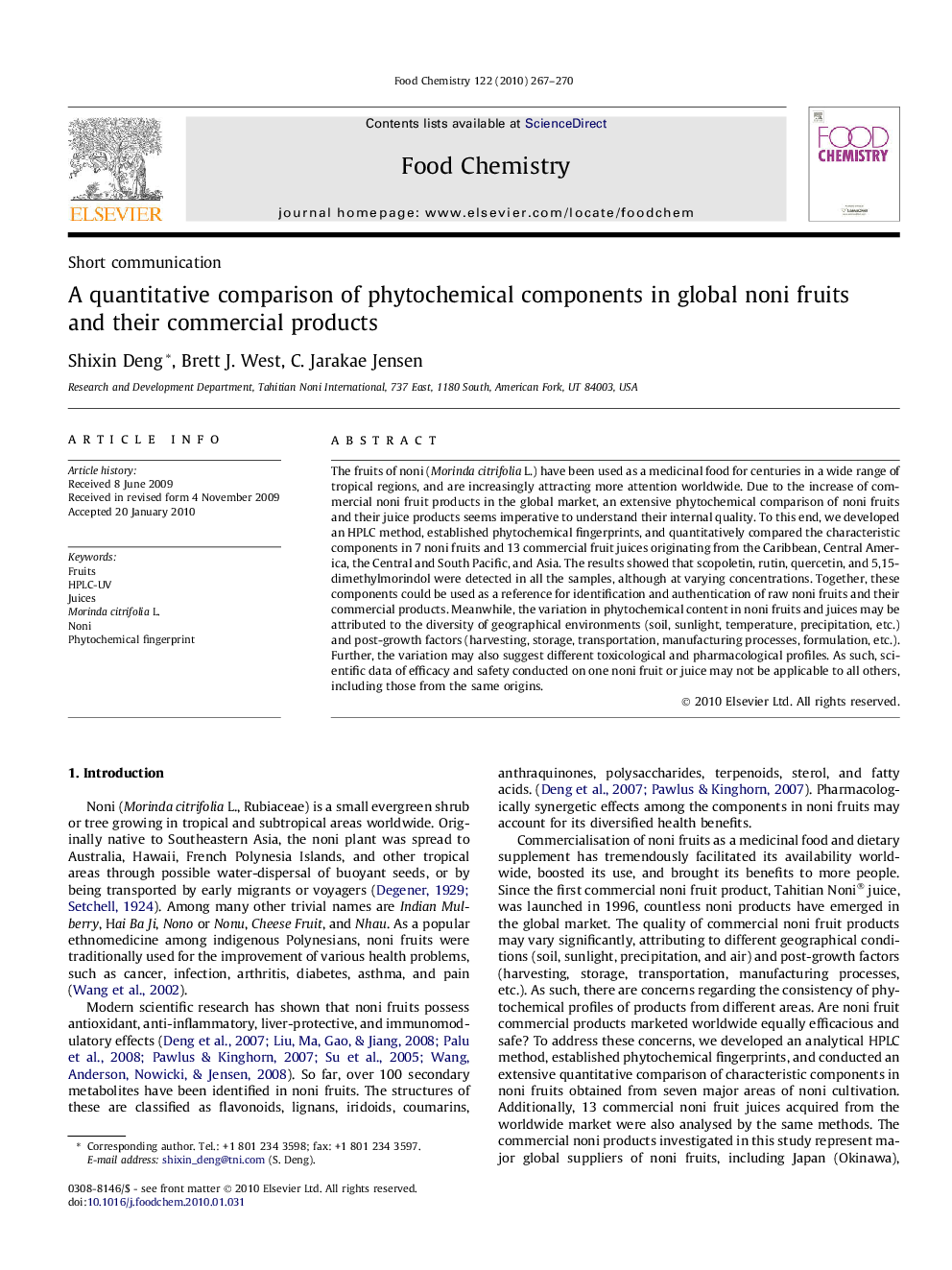| Article ID | Journal | Published Year | Pages | File Type |
|---|---|---|---|---|
| 1186187 | Food Chemistry | 2010 | 4 Pages |
The fruits of noni (Morinda citrifolia L.) have been used as a medicinal food for centuries in a wide range of tropical regions, and are increasingly attracting more attention worldwide. Due to the increase of commercial noni fruit products in the global market, an extensive phytochemical comparison of noni fruits and their juice products seems imperative to understand their internal quality. To this end, we developed an HPLC method, established phytochemical fingerprints, and quantitatively compared the characteristic components in 7 noni fruits and 13 commercial fruit juices originating from the Caribbean, Central America, the Central and South Pacific, and Asia. The results showed that scopoletin, rutin, quercetin, and 5,15-dimethylmorindol were detected in all the samples, although at varying concentrations. Together, these components could be used as a reference for identification and authentication of raw noni fruits and their commercial products. Meanwhile, the variation in phytochemical content in noni fruits and juices may be attributed to the diversity of geographical environments (soil, sunlight, temperature, precipitation, etc.) and post-growth factors (harvesting, storage, transportation, manufacturing processes, formulation, etc.). Further, the variation may also suggest different toxicological and pharmacological profiles. As such, scientific data of efficacy and safety conducted on one noni fruit or juice may not be applicable to all others, including those from the same origins.
